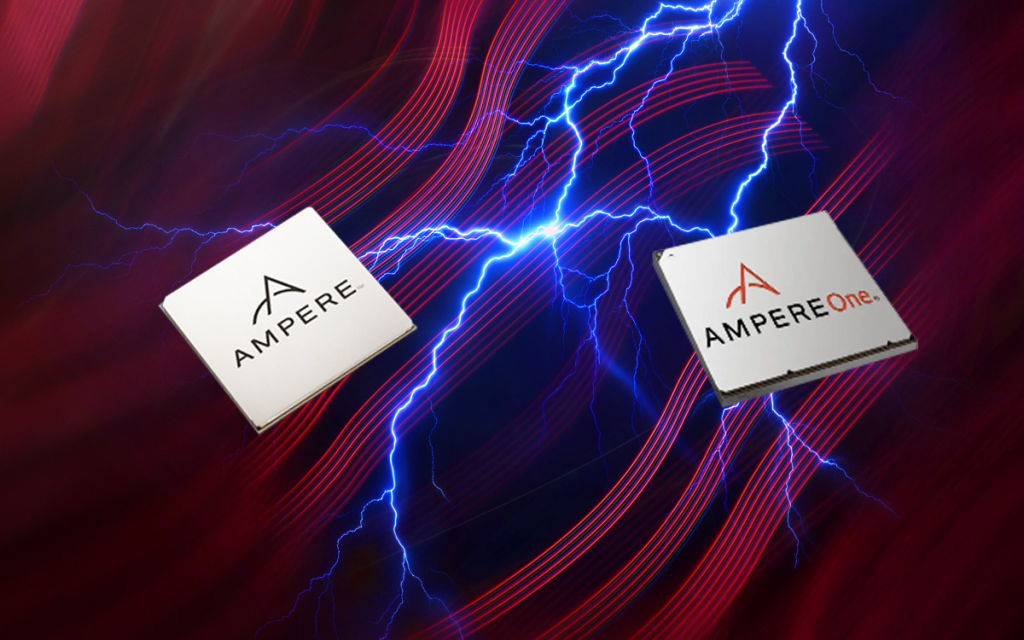
In the rapidly evolving technology landscape, Ampere has emerged as a leader for Cloud Native Processors, offering alternate high-performance, scalable processors that cater to the demanding needs of modern data centers. The Ampere Altra and AmpereOne families are the culmination of Ampere’s innovation, each tailored to deliver predictable, efficient, and scalable performance. But what exactly sets these two processor families apart? Let’s dive into the differences and understand which might be the right choice for your specific needs.
Core Count and Performance
One of the most striking differences between the Ampere Altra and AmpereOne families lies in their core count and performance capabilities. The Ampere Altra family offers products ranging from 32 cores to 128 cores, operating at a consistent frequency of up to 3.0 GHz. This makes it a highly reliable option for a wide range of applications, from edge devices to hyperscale data centers.
On the other hand, the AmpereOne family pushes the boundaries even further, offering between 96 and 192 cores, with each core capable of reaching up to 3.7 GHz. This significant increase in core count and clock speed positions AmpereOne as the go-to solution for extremely demanding compute tasks, particularly in hyperscale environments where maximum performance and scalability are crucial.
Cache and Memory Management
Cache architecture is another area where these two families diverge. The Ampere Altra processors feature 64 KB of L1 instruction cache, 64 KB of L1 data cache, and 1 MB of private L2 cache per core. This configuration ensures consistent and predictable performance by mitigating the “noisy neighbor” problem often encountered in multi-core processing architectures.
AmpereOne is equipped with 16 KB of L1 instruction cache, 64 KB of L1 data cache while doubling the L2 private cache to 2 MB per core. Additionally, AmpereOne introduces new memory management features and advanced cache coherence protocols, including mesh congestion management and Quality of Service (QOS) enforcement. These enhancements ensure that even in high-core-count scenarios, data movement remains predictable and efficient, further improving overall performance.
Memory Bandwidth and Capacity
Memory bandwidth and capacity are critical factors in processor performance, especially in data-intensive applications. The Ampere Altra family supports eight 72-bit DDR4-3200 channels, providing ample memory bandwidth and addressing up to 4 TB of memory.
In contrast, AmpereOne family processors support the more advanced eight 80-bit DDR5 channels, doubling the maximum addressable memory to 8 TB. This improvement not only boosts memory bandwidth but also allows for more complex and memory-hungry applications to run smoothly, making AmpereOne an ideal choice for more intensive workloads, including AI inference and large-scale data analytics.
PCIe Support and System Flexibility
Both processor families offer extensive PCIe support, essential for connecting various off-chip devices like networking cards, storage devices, GPUs, and accelerators. The Ampere Altra family provides up to 128 lanes of PCIe Gen4 per socket, supporting up to 48 off-chip devices. This level of flexibility is well-suited for a variety of system configurations, from cloud gaming to high-performance networking.
AmpereOne, however, is upgraded with support for PCIe Gen5, offering 128 lanes per socket at 32 GT/s per lane, and connecting up to 32 off-chip devices. This enables faster data transfer rates and is particularly beneficial for next-generation applications like generative AI models, where every bit of performance counts.
Power Efficiency and Sustainability
Ampere has placed a strong emphasis on power efficiency and sustainability in both processor families. The Ampere Altra family is known for its power-efficient design, enabling cloud-native workloads to reduce power consumption by up to three times compared to legacy x86 systems. This not only reduces operational costs but also helps organizations meet their Environmental, Social, and Governance (ESG) goals.
AmpereOne takes this commitment to sustainability even further, incorporating advanced power management features such as Adaptive Voltage Scaling (AVS) and Dynamic Voltage Frequency Scaling (DVFS). These features allow for fine-grained control over power consumption, further reducing energy usage and operational costs. AmpereOne’s design is optimized for maximum rack density, outperforming legacy systems in terms of performance per watt to meet Net-Zero emissions goals.
Conclusion
Both the Ampere Altra and AmpereOne families offer unique strengths tailored to different use cases. Ampere Altra is ideal for organizations seeking a balance between performance, power efficiency, and scalability, making it suitable for a wide range of applications from edge computing to hyperscale data centers.
AmpereOne, with its higher core counts, improved memory management, and more advanced power efficiency features fit organizations with the most demanding compute needs. Whether it’s supporting the latest AI models or scaling out massive cloud-native applications, AmpereOne delivers unparalleled performance and efficiency.
Choosing between Ampere Altra and AmpereOne ultimately depends on your specific requirements, talk to our Solution Experts when choosing the best solutions for your application.
Learn more
- Check out our portfolio of Ampere solutions
- Use cases on how Ampere CPUs are transforming organizations
Ampere, Altra and the A and Ampere logos are registered trademarks or trademarks of Ampere Computing. All other trademarks are the property of their respective holders.